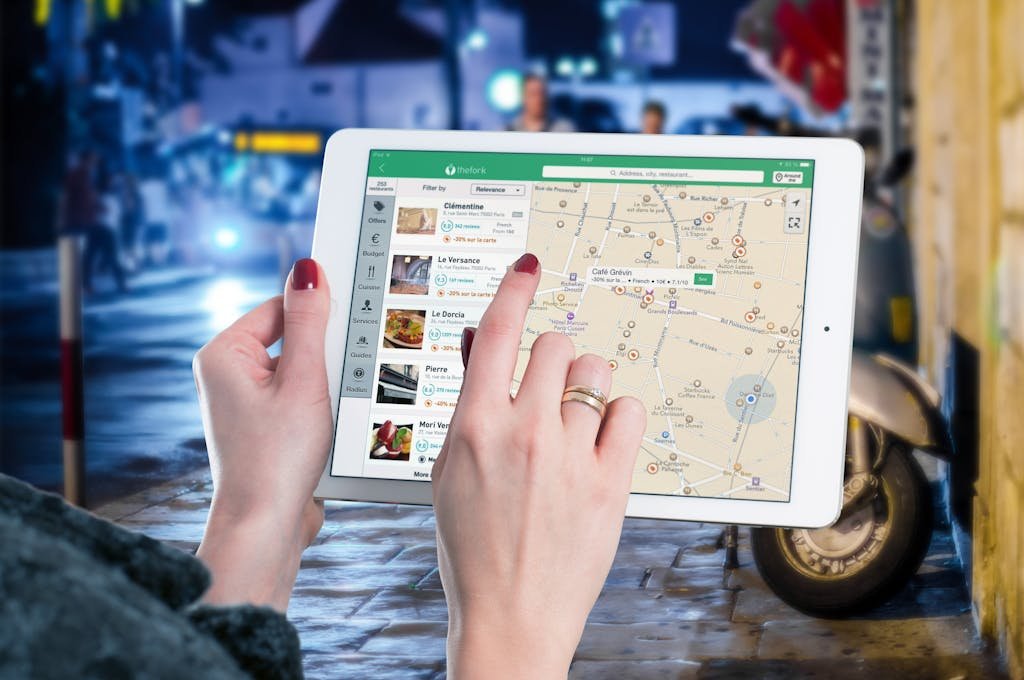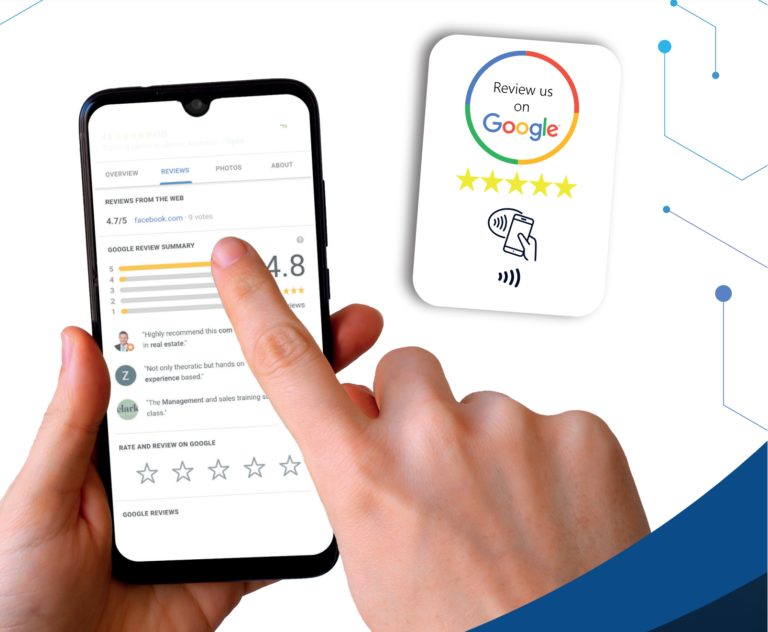Having a positive online presence on Google is crucial for modern businesses.
Google reviews can increase customer trust, improve search engine rankings, and gain higher visibility.
This article will explore the importance of Google reviews and discuss effective strategies for boosting them.
With these strategies, businesses can create a more positive online presence and increase their Google reviews.
Key Takeaways
- Asking every customer for a review is the most effective way to get more Google reviews.
- Adding review links to your website or emails makes it easier for customers to leave a review.
- Providing excellent customer service can lead to more Google reviews.
- Responding to both positive and negative reviews shows that you value customer feedback and can help build a positive online reputation.
Understanding Google Reviews
Understanding the importance of Google reviews is key to successfully gaining more reviews for your business. Consumers trust online reviews, and having positive reviews on Google can help build consumer trust in your brand.
Google reviews are part of Google Business Profile listings and good star ratings can improve chances of appearing in local searches. Reviews also build trust, can be used for lead generation, and persuade customers.
Quality customer service is key to gaining reviews. Make it easy to write reviews with links and respond to reviews to build your online reputation.
Importance of Google Reviews
Google reviews are an important tool for businesses in building trust and credibility. They can help businesses establish a trustworthy online presence and make a positive impact on customer decision-making.
Enhancing SEO and online visibility is another benefit of having Google reviews. Reviews on Google can improve search engine rankings, making it easier for potential customers to find and discover the business online.
Influencing potential customers’ decisions is yet another advantage of Google reviews. Positive reviews can sway potential customers to choose a particular business over its competitors, as they provide social proof of the quality and reliability of the products or services offered.
Trust and Credibility Building
Building trust and credibility through positive Google reviews can prove to be an invaluable asset for businesses. Reviews build trust and transparency, and potential customers are more likely to buy from businesses with higher ratings. Responding to reviews and providing excellent customer service can also help to convince and convert customers.
Asking for reviews, providing a direct link to the business profile, and adding reviews to your website or emails are all effective ways to generate more reviews. By utilizing these strategies, businesses can boost their online presence and credibility.
Enhancing SEO and Online Visibility
Good Google reviews can help to enhance a business’s SEO and improve its online visibility. From increasing organic search rankings to building trust and transparency, there are many benefits to be gained from Google reviews:
- Increased visibility: Higher star ratings can improve your chances of showing up in relevant local searches, and Google Business Profile listings with high star ratings can appear above organic listings.
- SEO optimization: Google reviews are part of Google Business Profile listings, so good reviews can increase online visibility and drive more traffic to your website.
- Lead generation: Optimized Google Business Profile listings with customer reviews can drive potential leads to your website.
Influencing Potential Customers’ Decisions
Google reviews are an influential source for customer decision-making. They build trust and transparency, allowing customers to feel secure in their purchase. Positive reviews can increase online visibility, drive more traffic to your website, and even appear above organic listings.
Reviews also set up a sales funnel where reviews build trust and your website persuades. Asking every customer for a review and providing a direct link to your Google Business Profile can help get more reviews.
Responding to reviews with politeness shows customers that their feedback is valued.
Effective Strategies for Boosting Google Reviews
There are a number of effective strategies that businesses can use to increase the number of Google reviews they receive. These include:
- Asking customers for reviews
- Adding review links to websites & emails
- Providing excellent customer service
- Responding to existing reviews
Asking customers politely and providing clear steps can lead to more reviews, while providing great customer service and responding to reviews can build trust and reputation. Adding review links to websites and emails, and responding to reviews can help boost the number of Google reviews.
Direct Approaches
One direct approach to garner more Google reviews is to ask customers for their feedback.
Additionally, businesses can add review links to their website or emails to simplify the process for customers.
Lastly, providing exceptional customer service can be a powerful way to encourage customers to leave positive reviews.
Asking Customers for Reviews
The most effective way to acquire Google reviews is to directly ask customers for them. Requesting reviews should be done when customers are satisfied with their experience. Strategies include:
- Timing & Messaging: Ask for reviews when customers are happy and provide clear steps and a direct link to your Google Business Profile.
- Links: Generate custom review links through your Google Business Profile and add them to your website or emails.
- Customer Service: Build relationships and provide excellent service to encourage customers to leave reviews.
Adding Review Links to Websites and Emails
Building on the strategies of asking customers for reviews, adding review links to websites and emails is a direct approach to getting more Google reviews. Generate a custom review link from the Google Business Profile account and add it to website pop-ups or emails.
This simplifies the review process for customers and provides a direct link for them to leave a review. Make sure to provide clear instructions and examples of top reviews, as this can increase the likelihood of customers leaving reviews.
Offering Exceptional Customer Service
How often are customers offered exceptional customer service when interacting with your business?
Providing great customer service is key to getting more Google reviews.
- Build relationships and express gratitude
- Provide personalized help and seek feedback
- Train team members to be polite and empathetic
Engaging with Existing Reviews
Engaging with existing reviews is an important part of the process when it comes to getting more Google reviews. Reviewers want to know that their feedback is valued and taken into account, so it is important to respond to reviews, positive or negative, in a timely and sincere manner.
Using tools to generate reviews is also a great way to showcase stellar reviews on other platforms and help boost your online presence.
Responding to Reviews, Positive or Negative
By responding to reviews, both positive and negative, businesses can build a positive online reputation and show that they value customer feedback.
Here are the key points to consider:
- Engaging with reviews: Reply with politeness and gratitude. Negative reviews should be addressed with a solution or an apology.
- Asking customers: Ask every customer for a review, provide clear steps, and share top reviews.
- Responding: Reply to reviews quickly, use a custom link via email, and make it easy for customers to leave a review.
Showcasing Stellar Reviews on Other Platforms
Once its customers have left a stellar Google review, a business should take advantage of its reviews by showcasing them on other platforms. This will help to build trust and credibility with customers, as well as increase the reach of the review.
To do this, businesses should embed the review on their website or share it in social media posts. This will help to boost visibility and draw attention to the positive feedback from customers.
Additionally, businesses should ensure that the review is properly formatted for each platform, as this will help to ensure that the review is seen in the best light.
Using Tools for Review Generation
Using the right tools can help businesses maximize their existing Google reviews and generate more reviews in the future. Review generation tools provide the following benefits:
- Increased visibility: Generate custom links to easily add to website or emails, improving online visibility.
- Improved efficiency: Automate the process of asking customers for reviews to save time and effort.
- Enhanced customer experience: Prompt customers to leave reviews, building trust and customer loyalty.
Using review generation tools can help businesses optimize their Google reviews and generate more reviews in the future.
Leveraging Digital Marketing for Reviews
Many businesses can benefit from leveraging digital marketing strategies to generate more Google reviews. From adding review links to websites and emails to providing excellent customer service, there are several ways to drive more positive reviews.
Businesses can also use tools such as pop-ups, custom links, and targeted emails to make it easier for customers to leave reviews.
Furthermore, responding to existing reviews, both positive and negative, can help build an online reputation and demonstrate that customer feedback is valued.
Integrating Reviews into Online Assets
Integrating Google reviews into your online assets is an effective way to get more reviews and leverage digital marketing. This includes adding review links to listings, websites, and landing pages. By incorporating review links, you make it easier for customers to leave reviews, increasing the likelihood of receiving feedback. Additionally, leveraging social media to spread the word about your business can also contribute to boosting your online presence. By sharing positive reviews or encouraging customers to leave reviews on platforms like Facebook or Twitter, you can expand your reach and gain more visibility. These strategies work together to create a comprehensive approach to utilizing Google reviews and digital marketing.
Listings
Incorporating reviews into a business’s online assets can help increase its visibility on Google. Listings are an important part of this process:
• Optimize Google Business Profile listings with customer reviews to drive potential leads.
• Generate a custom review link to simplify the process for customers.
• Respond to reviews to show that customer feedback is valued.
These steps will ensure that reviews are an effective part of a business’s online presence.
Websites & Landing Pages
Adding review links to your website or emails is an effective way to get more Google reviews. Generate a custom link through your Google Business Profile account and share it with customers in emails or on your website. This makes it easier for customers to leave a review.
Also, providing great customer service can build relationships and encourage customers to write reviews. Responding to reviews shows that you value customer feedback and helps build a positive reputation for your business.
Social Media Marketing
Although incorporating customer reviews into social media assets can be a great way to get more Google reviews, it is important to ensure that content is optimized for visibility and engagement.
To optimize your online assets, consider the following:
- Optimizing Google Business Profile Listings: Make sure your reviews are optimized for local search results and appear above organic listings.
- Asking for Reviews: Ask customers for reviews when they are happy, provide clear steps and a direct link to your profile.
- Utilizing Links: Add review links to your website or emails, and use the link in pop-ups or targeted emails.
Advertising and Reviews
Advertising reviews can be a powerful tool for increasing visibility and building trust.
Integrating reviews into search, display, and video ads can be an effective way to improve your online presence and drive more traffic to your website.
Leveraging customer feedback in your advertising campaigns can be a great way to create authentic and engaging content.
Incorporating Reviews in Search, Display, and Video Ads
By incorporating reviews in search, display, and video ads, businesses can leverage the power of customer feedback to boost their online visibility and reputation. Google reviews provide social proof, increase trust, and can help rank higher in relevant searches.
Advantages include:
- Increased Visibility: Show up in relevant local searches and appear above organic listings.
- Lead Generation: Optimized listings with customer reviews drive more potential leads to your website.
- Convincing & Converting: Reviews create an automatic sales funnel and can help convert customers.
Google reviews provide an effective way for businesses to reach a wider audience and gain a competitive advantage online.
Specific Strategies for Different Business Types
For businesses to maximize the effectiveness of their Google review strategy, they need to tailor their approach to their specific industry and customer base. Different business types require different approaches.
One approach is leveraging online visibility with SEO reviews. This involves optimizing the content of the reviews to include relevant keywords and phrases that potential customers are likely to search for.
Another approach is using reviews to convince and convert customers. Positive reviews can serve as social proof, showing potential customers that others have had a good experience with the business and increasing their trust and likelihood of making a purchase.
Asking customers for reviews is another effective strategy. This can be done through various methods, such as in-person requests, email campaigns, or through follow-up communication after a purchase or service.
Adding review links to websites or emails is also important. This makes it easy for customers to leave a review and increases the likelihood that they will do so.
Providing excellent customer service is crucial for generating positive reviews. When customers have a positive experience, they are more likely to leave a review and recommend the business to others.
Lastly, responding to existing reviews is an important part of an effective review strategy. This shows that the business values customer feedback and is committed to addressing any concerns or issues that may arise.
Catering to Various Industries
Google reviews are a powerful tool for businesses of all types. However, it’s important to understand the unique needs and expectations of each industry.
In this article, we’ll look at the specific strategies for businesses in the education, healthcare, retail, travel, and entertainment industries. We’ll explore how to cater to their individual needs and maximize the potential of Google reviews.
Education
When it comes to educational institutions catering to various industries, having positive reviews on Google can be an invaluable asset. Google reviews can help build trust with potential students and their families and increase visibility in local searches.
Benefits include:
- Building trust: showcasing positive reviews can build consumer trust in your brand.
- Increasing visibility: higher star ratings can improve chances of appearing in relevant local searches.
- Lead generation: reviews can set up an automatic sales funnel and be used for lead generation.
With the proper steps, educational institutions can leverage Google reviews to their advantage.
Healthcare
Transitioning from educational institutions to healthcare, it is important to understand how Google reviews can help your business in the healthcare industry. Reviews can help build trust and visibility while providing an effective way to engage with customers and generate leads.
By optimizing your Google Business Profile, you can increase your online presence without costly paid advertisements. Customer reviews can be used to convince and convert customers, and you can easily add review links to your website or emails.
Asking customers for reviews and providing excellent customer service are essential steps, as is responding to existing reviews. All of these actions can help you get more Google reviews.
Retail
For retailers catering to various industries, leveraging the power of Google reviews can be a great way to boost their online presence and attract more customers. It’s important to:
- Understand the importance and benefits of Google reviews:
- Social proof and customer decision-making.
- Increased online visibility and traffic.
- Higher local search rankings.
- Ask customers for reviews:
- At the right time.
- Provide clear instructions.
- Offer incentives.
- Respond to reviews:
- Positive and negative.
- Show gratitude.
- Build relationships.
- Improve customer experience.
Travel & Entertainment
For travel and entertainment businesses catering to various industries, leveraging the power of Google reviews can be a great way to establish a positive presence online and attract more customers. Good reviews can increase visibility, boost organic search rankings, and give potential customers the social proof they need to make a purchase.
To get reviews, ask customers when they are satisfied, provide clear instructions, and add review links to your website or emails. Good customer service is also key to increase the chances of customers leaving reviews.
Strategies for Diverse Business Structures
For businesses with multiple locations, such as franchises, or those that collaborate with agencies, it is important to understand the nuances of getting more Google reviews. Different strategies are needed to ensure that reviews are appropriately distributed and attributed to the correct locations and entities.
Leveraging the power of Google reviews can help create trust and visibility for such businesses and foster more conversions.
Multi-Location Businesses
Organizing reviews for multiple locations can be a daunting task, but with the right strategies in place, businesses can effectively leverage Google reviews to their advantage. Here are some tips:
- Ask for reviews: Send a custom link via email or add review links to website/emails.
- Provide excellent service: Build relationships, express gratitude, & provide personalized help.
- Respond to reviews: Show customers you value their feedback & address negatives with solutions.
Agency Collaborations
It can be difficult for companies with multiple stakeholders to coordinate a unified approach to garnering Google reviews. One strategy is to work with an agency partner that specializes in obtaining reviews from a variety of sources.
This allows for a centralized approach to review collection, while providing access to multiple channels for reviews. Additionally, the agency can help ensure that the reviews are compliant with Google’s requirements, so that the reviews are seen as legitimate and not removed from the platform.
Working with an agency can help streamline the process and ensure that reviews are collected in a timely and efficient manner.
Utilizing Educational Content and Tools
To maximize the number of reviews you receive, educational content and tools can be used to help customers understand the importance of leaving reviews and how to do so. Utilizing Google reviews can:
- Build trust and transparency
- Drive more traffic
- Improve visibility
- Convince and convert customers
- Build consumer trust
- Generate leads
- Ask and add review links
- Ask customers
- Add links to website/emails
Providing excellent customer service and responding to reviews can also help.
Staying Updated on Review Trends
Keeping up with the latest review trends is essential for businesses that want to get more Google reviews. To stay informed, it is important to engage with informative blogs, access educational resources, and utilize tools for website evaluation and feedback.
Doing so will help businesses optimize their review strategy and maximize their visibility on Google.
Engaging with Informative Blogs
Staying informed on the latest review trends is key to getting more Google reviews, so engaging with informative blogs is essential. To gain an advantage, focus on:
- Staying updated: Subscribe to relevant blogs, read reviews, and analyze trends.
- Implementing strategies: Create review templates, incentivize customers, and track progress.
- Monitoring results: Measure reviews, analyze customer feedback, and update strategies as needed.
Engage with authoritative blogs to stay ahead in the review game.
Accessing Educational Resources
Accessing educational resources to stay updated on the latest review trends is essential for gaining an advantage in the review game. Make sure to stay on top of the latest developments within the Google review landscape by reading blogs and other online resources.
Doing research on the best practices and strategies can help you optimize your approach for gaining more Google reviews. Additionally, staying in tune with consumer sentiment and preferences can help you tailor your review request messages and offers to better convince customers to leave reviews.
Tools for Website Evaluation and Feedback
Following on from accessing educational resources to stay updated on the latest review trends, it is important to employ various tools to evaluate and provide feedback for your website.
- Use analytics tools to track website performance and user behaviour, such as Google Analytics.
- Utilize A/B testing to compare different versions of the same page and identify what resonates with customers.
- Leverage feedback and survey tools to gauge customer satisfaction and uncover areas for improvement.
These tools are essential to measure the effectiveness of your website and ensure that it remains an effective tool for customer engagement.
Conclusion: Prioritizing Google Reviews in Your Business Strategy
Prioritizing Google reviews in your business strategy is key to success in today’s digital landscape. Reviews build trust, increase visibility, and help to convince and convert potential customers.
To get more reviews, you should ask every customer, provide clear steps to leave a review, and add review links to your website or emails. In addition, outstanding customer service should be provided, and existing reviews should be responded to.
Frequently Asked Questions
How Can I Use Google Reviews to Increase My Website Traffic?
Google reviews can be a powerful tool for increasing website traffic. Good reviews can help boost online visibility and drive more traffic to your website. Higher star ratings can improve your chances of showing up in relevant local searches, and can appear above organic listings. Leverage Google reviews to your advantage and watch your website traffic grow.
How Do I Respond to Negative Google Reviews?
When responding to negative Google reviews, it’s important to be polite and use a solution-focused approach. Apologize if needed, thank them for their feedback, and provide a solution. Engaging with reviews, regardless of the content, can help build a positive reputation for your business.
Can I Use Google Reviews for Lead Generation?
Yes, Google reviews can be an effective tool for lead generation. Positive reviews can help build consumer trust in your brand, increasing visibility and driving more traffic to your website. Reviews can be used to persuade customers and create an automated sales funnel.
How Can I Integrate Google Reviews Into My Website or Emails?
Integrating Google reviews into your website or emails can be done by generating a custom link through your Google Business Profile account and adding it to your website or sending it via email. This simplifies the process for customers, allowing them to easily leave a review.
What Strategies Should I Use for Different Business Types?
Different businesses have different strategies for getting Google reviews. For example, e-commerce stores can use review links in their emails and websites, while brick-and-mortar businesses can use personalized customer service and ask customers for reviews. All businesses should respond to reviews and provide a clear path for customers to leave reviews.
Conclusion
Google reviews can be a powerful tool for businesses to build trust with customers and increase their visibility online. By understanding the importance of Google reviews, utilizing effective strategies for boosting their presence, and engaging with existing reviews, businesses can create a more positive online presence and increase customers.
By staying updated on review trends and utilizing educational content and tools, businesses can prioritize Google reviews in their business strategy and benefit from the advantages they offer.






